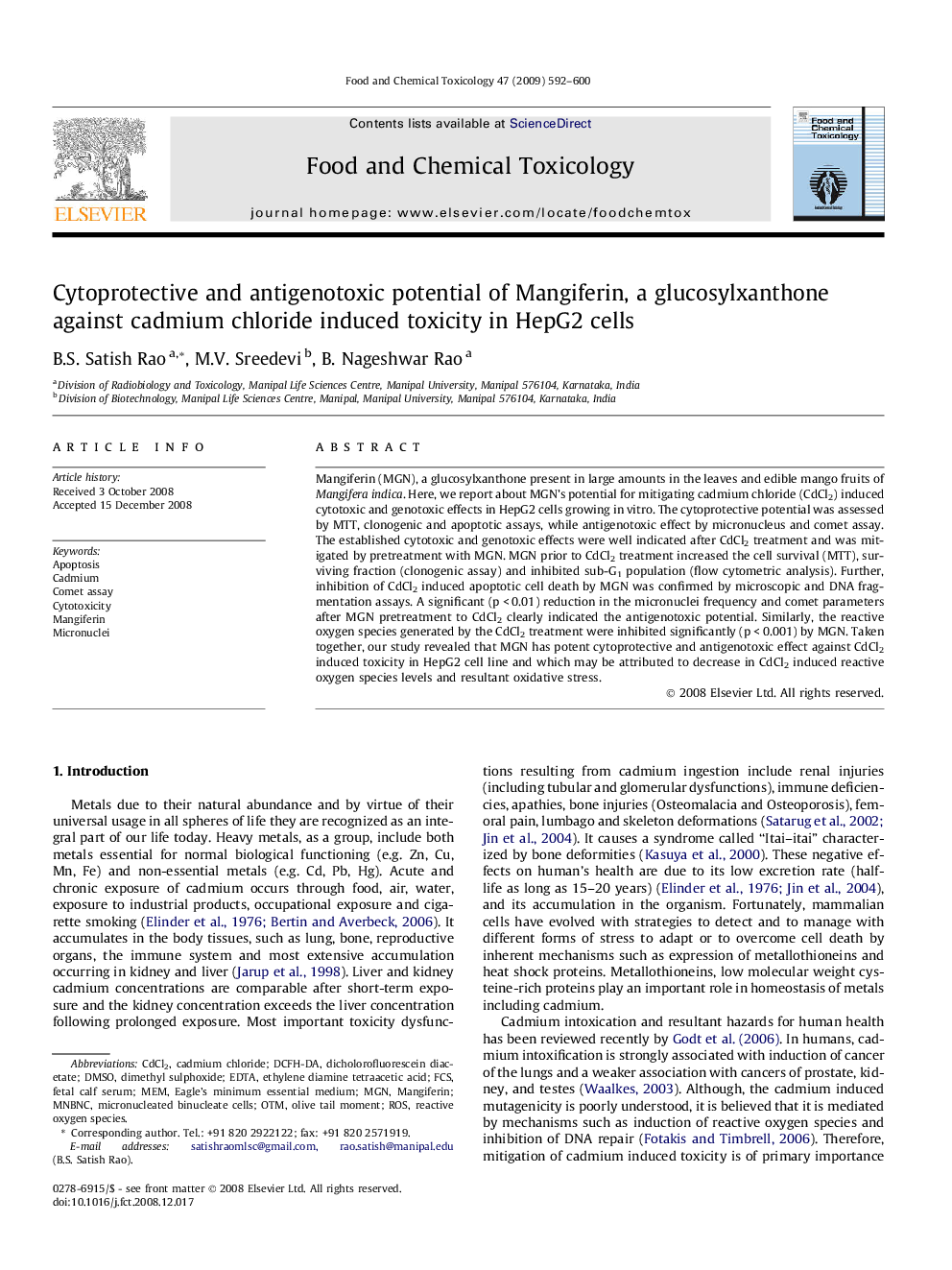| Article ID | Journal | Published Year | Pages | File Type |
|---|---|---|---|---|
| 2586539 | Food and Chemical Toxicology | 2009 | 9 Pages |
Mangiferin (MGN), a glucosylxanthone present in large amounts in the leaves and edible mango fruits of Mangifera indica. Here, we report about MGN’s potential for mitigating cadmium chloride (CdCl2) induced cytotoxic and genotoxic effects in HepG2 cells growing in vitro. The cytoprotective potential was assessed by MTT, clonogenic and apoptotic assays, while antigenotoxic effect by micronucleus and comet assay. The established cytotoxic and genotoxic effects were well indicated after CdCl2 treatment and was mitigated by pretreatment with MGN. MGN prior to CdCl2 treatment increased the cell survival (MTT), surviving fraction (clonogenic assay) and inhibited sub-G1 population (flow cytometric analysis). Further, inhibition of CdCl2 induced apoptotic cell death by MGN was confirmed by microscopic and DNA fragmentation assays. A significant (p < 0.01) reduction in the micronuclei frequency and comet parameters after MGN pretreatment to CdCl2 clearly indicated the antigenotoxic potential. Similarly, the reactive oxygen species generated by the CdCl2 treatment were inhibited significantly (p < 0.001) by MGN. Taken together, our study revealed that MGN has potent cytoprotective and antigenotoxic effect against CdCl2 induced toxicity in HepG2 cell line and which may be attributed to decrease in CdCl2 induced reactive oxygen species levels and resultant oxidative stress.
